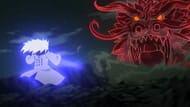Naruto always focused on the wide range of techniques available. However, Taijutsu was not always regarded with the same formality as the other jutsus. At first glance, that always seemed unfair. Why wasn't something as gritty and pragmatic as hand-to-hand combat afforded more formal training throughout the villages? The reality, though, goes beyond simple curriculum choices.
Taijutsu requires more than just chakra or talent, it demands constant stamina, discipline, and a high level of physical conditioning that can't be learned through lectures or scrolls. When I finally grasped just how much dedication it entails, my entire perspective shifted. That's why its lack of formality may be crucial.
Disclaimer: The article reflects the opinion of the writer and includes spoilers from the Naruto anime/manga.
Why Taijutsu could not be taught formally in Naruto, explained

Initially, it felt like it was truly unjust that Taijutsu wasn't taught officially in Naruto. Unlike Ninjutsu or Genjutsu, which had well-ordered techniques and ranking systems, as well as elite schools for training in them, Taijutsu always appeared as a poorly neglected side project.
Rock Lee and Might Guy were frequently framed as outliers, and not examples to be followed. It only took some time to see what the real, physical, and mental effort Taijutsu requires to change these beliefs.
Taijutsu is not something that someone can learn by heart or pick up with a skilled teacher, as it demands restless conditioning, constant repetitions, and a physique that can take the damage.

Rock Lee and Might Guy trained so hard that they were hospitalized quite regularly just for exhausting their limits. Their achievements were not due to bloodlines or unique jutsu, they were due to agony, fatigue, and commitment that few would intentionally follow.
Might Guy's success illustrates just how far pure Taijutsu can take you, but also how uncommon that degree of dedication is. He defeated all Seven Ninja Swordsmen of the Mist and lived through it, something even most jonin were not able to.
Later, during the Fourth Great Ninja War, he battled Madara Uchiha at his strongest and made him admit Guy's strength. That moment was not only fan service; it was a statement that raw effort and Taijutsu expertise can stand on par with even the gods of the shinobi world.

Here's the catch, though: Guy and Lee's way is not for everyone. Their training depends on complete dedication, sacrifice, and violent training regimens. Most ninjas, even gifted ones, would perish from this level of punishment. Kakashi himself was so impressed by Guy's efforts that he acknowledged it. At that moment, I realized Taijutsu is not forgotten, it just cannot act as a substitute for real experience.
You can't box that type of effort into a school setting. It must be lived, suffered, and gained day by day. What was perceived as neglect was respect for its complexity.
Final thoughts
Taijutsu was often perceived as unfairly disregarded in Naruto when compared with Ninjutsu and Genjutsu, but that view changes quickly when one sees the true intensity of it. Unlike chakra-based arts, Taijutsu is opposed to absurd amounts of physical conditioning, discipline, and suffering day in and day out.
Both Might Guy and Rock Lee achieved their impressive feats with training, not because they were talented or because of their bloodline. Its informal aspects are not a neglect, but rather an acceptance that not everyone could undertake the training necessary to become great at Taijutsu. It is something to be earned, not taught.
Related links:
- How did Kakashi get his scar in Naruto? Explained
- Sasuke Retsuden: Why Naruto is in danger, explained
- Why did Shisui kill himself in Naruto? Explained
